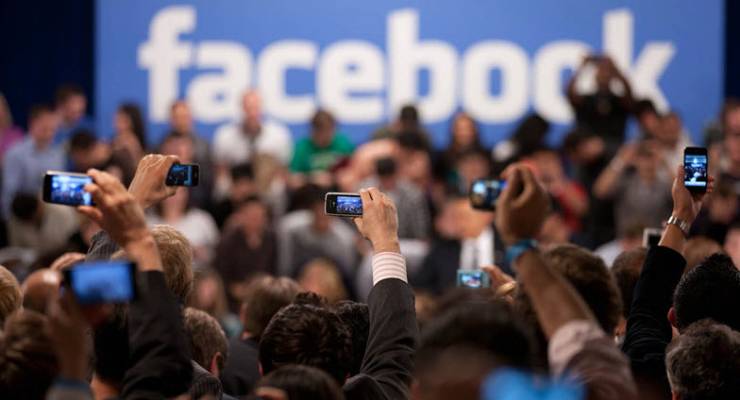
Facebook’s two-year post-Trump election nightmare got a lot worse last week as a New York Times report painted a picture of “corporate over-reach and negligence” in its failure to deal with fake news, privacy and social harm.
The report questioned whether the social media giant could properly manage its platform in the face of Russian hacking of the US election, data privacy mismanagement and the social harm from circulating vilifying content and abuse.
Worse, the Facebook strategy of monetising personal relationships as behavioural data to sell to advertisers means it may not be able to fix the problem it’s created. After almost a decade of scrambling to get into the company’s News Feed, journalists are being forced to ask: is this where I want to be?
It comes as Australian media are waiting for the review of digital platforms by the ACCC, expected early next year, hoping for measures to restrain the large global tech giants and while the US Congress is looking for bipartisan controls. This tumult has been reflected in its share price, which closed on Friday at US$139.53, down about a third on its peak last July, affecting both its value and staff dissatisfaction.
There was plenty to embarrass in the NYT report. Most serious was the accusation of encouraging anti-Semitic slurs against Facebook critics supported by George Soros. This came out just weeks after “Soros” had become the go-to trope of Trump and his alt-right supporters.
Since the election of Trump two years ago, the company’s daily user growth has fallen to 3% a year in the developed markets of North America and Europe. Facebook doesn’t release standalone figures for Australia, but online statistics portal Statista estimates Australian usage at around 10.6 million, similar to rates in other developed markets.
Facebook has been able to mine this usage more intensively, with developed market revenues rising from US$5.2 billion in the third quarter of 2016 to a shade under US$10 billion in the 2018 quarter just finished.
These figures suggest annual Australian revenues around $1.4 billion — or about 10% of Australian advertising spend. Earlier this year, the company declared local revenues for 2017 of $477 million to the Australian Tax Office, although it only declares revenues booked through its Sydney and Melbourne ad sales teams. However, most of this more intensive exploitation came in 2017, with revenues this year rising more slowly, suggesting the company is reaching its limits, at least in the developed world.
At its heart, Facebook is an advertising platform, which uses its network to on-sell the users of its product to advertisers as potential customers. Nothing wrong with that. It’s what newspapers, television and radio have been doing for over a century. But where these media target users via exercises of curated editorial judgement, Facebook targets users based on your personal behaviour and your interactions with everyone you’ve ever known — whether they’re on Facebook or not.
Thus, all the challenges facing Facebook — from the Russian Internet Research Agency to fake news through Cambridge Analytica research on data privacy — seem like a feature, not a bug, of the advertising algorithm fitted over the network.
That’s why the company is finding out that digital problems need analogue solutions — real people who can identify bad actors that the algorithm cannot. But this brings cost. Unlike the algorithm, people don’t scale — you need a lot, speaking many different languages, to deal with the daily petabytes of data.
In January, CEO Mark Zuckerberg addressed the trust problem more existentially, saying he wanted the time users spent on the platform to be “time well spent” that is, purposeful and restrained. By August, Quartz was calling that the “Kendall Jenner Pepsi moment” when a social movement became a marketing ploy.
The damage that last week’s NYT piece has done is to show that, despite two years of “delay, deny, deflect”, Facebook remains in crisis.
The fall in its share price reflects a loss of faith in Facebook’s potential for growth. And in the internet world, as Bob Dylan cautioned, it “proves to warn that he not busy being born is busy dying”.








The biggest problem with Facebook is that it is ‘faceless’ … there is no identifiable employee available with who issues/concerns can be raised. Instead, users are expected to feed their questions/queries/problems into a dark, automated hole, from which may or may not emerge a useful response.
A page I manage used to promote on Facebook (not large amounts but large enough for a community, not-for-profit voluntary organisation). After about a year, we noticed that there was a significant drop in the reach of our promotions (notwithstanding the Facebook continued advertise – & still does – advertising reach figures that are blatantly false), so we tried to raise the issue with Facebook.
Initially they responded to a question that we hadn’t asked (a familiar tactic used by many dishonest organisations to frustrate enquirers in the hope that they will tire of the chase & simply go-away) but when we persisted, they simply stopped responding, even when we opening & publicly questioned the organisation’s honesty & integrity.
We no longer promote on Facebook, as we think its a racket.
We’re not sure of the situation today, but a couple of year ago we endeavoured to locate Facebook’s office & representatives in Australia: no address, no phone number, no email address, no ‘official’ representative … nothing … just an empty space.
Says it all really.